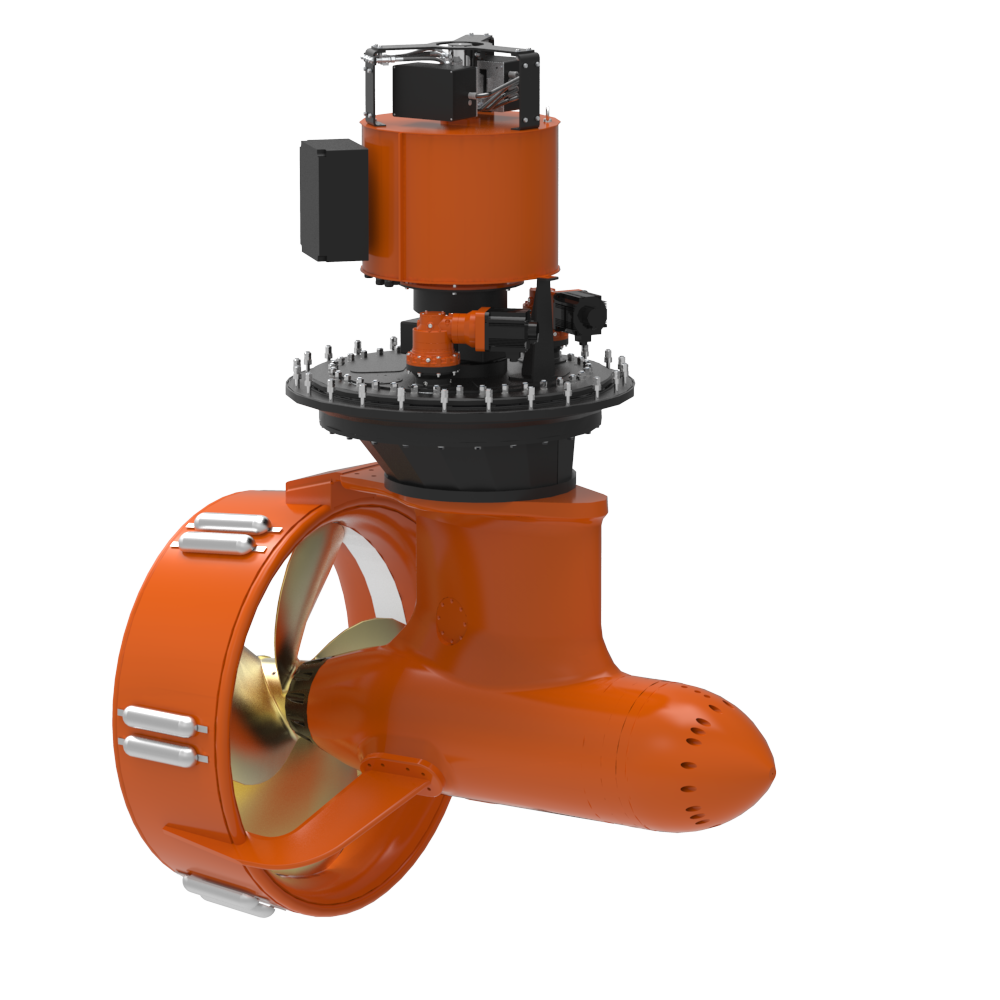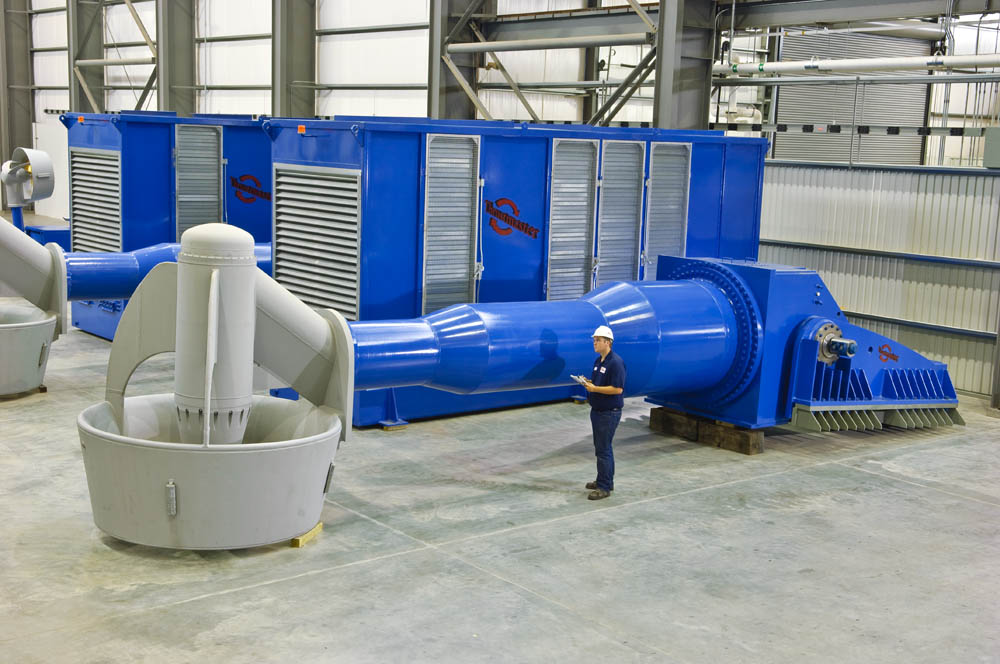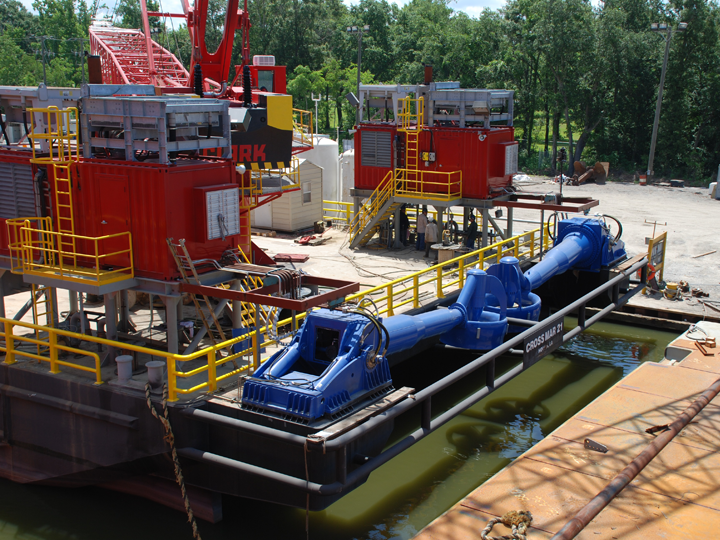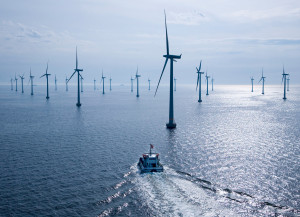
By: Johnray Strickland
Thrustmaster of Texas, a leading marine propulsion design and manufacturing company in the U.S., is looking to give an edge to U.S. based marine jack-up operators wanting to enter the U.S. offshore wind farm construction and maintenance sector by cutting the cost of entry in half with a unique propulsion system that allows conversion of existing vessels to dynamically positioned work vessels.
The United States’ offshore wind market is exploding with opportunity and current marine construction contracts are being awarded to operators outside the U.S. with a track record of success in European windfarm construction.
As of 2014, there are five proposed projects in the U.S. – the largest of which is Cape Wind. Cape Wind is on track to become the United States’ first offshore wind farm with a planned capacity of 470 megawatts. The project will consist of the installation of 130 Siemens 3.6-megawatt offshore wind turbines in federal waters off the coast of Cape Cod, Massachusetts, on Horseshoe Shoal in Nantucket Sound, the most technically optimal offshore wind power site in the United States.
In 2013, enthusiasm for the project was echoed by Michael Süß, member of the Management Board of Siemens AG and CEO of Siemens’ Energy Sector, “The USA is a key market for Siemens. We are proud to be able to announce the third big contract in the U.S. within just one week. Following the biggest onshore wind order ever and a follow-up order for a highly efficient and flexible gas-fired combined cycle power plant in Pennsylvania, we’ve now signed a contract to provide wind turbines and service for the first commercial offshore wind farm in the U.S.”
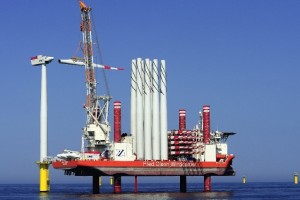 Offshore wind in the U.S. has significant potential to supply the coastal areas of the U.S. with green electrical power. Potential offshore locations are situated along the Southern and Northern Atlantic Coast and in the Gulf of Mexico. A recently published Navigant study awarded by the U.S. Department of Energy predicts that installed U.S. offshore wind power capacity will rise in the next five years to 3.5 gigawatts.
Offshore wind in the U.S. has significant potential to supply the coastal areas of the U.S. with green electrical power. Potential offshore locations are situated along the Southern and Northern Atlantic Coast and in the Gulf of Mexico. A recently published Navigant study awarded by the U.S. Department of Energy predicts that installed U.S. offshore wind power capacity will rise in the next five years to 3.5 gigawatts.
Development of these offshore construction projects enlist a wide variety of marine contractors and operators of wind turbine installation vessels, cable-lay vessels, windfarm maintenance vessels, supply vessels and more.
In 2014, U.S. based Deepwater Wind awarded a contract to Fred. Olsen Windcarrier Group out of Europe for the installation of five wind turbines at Block Island Wind Farm in the U.S. The installation will be carried out by a DP-2 class, 430 ft (132 m) jack-up installation vessel “Bold Tern” designed by Gusto MSC.
The vessel is self-elevating, self-propelled and dynamically positioned with large open deck space and an 800t offshore-rated crane. This foreign built, owned and crewed vessel was granted exemption to the Jones Act since there are no known US built, owned and crewed vessels available for this type of work.
In the U.S. there is an opportunity for vessel operators to win future contracts by converting their existing jack-up into dedicated wind turbine installation vessels with Thrustmaster’s patented Portable Dynamic Positioning System.
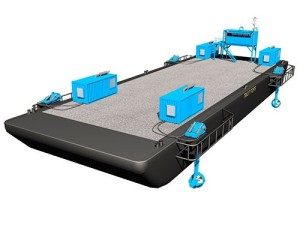 The Portable Dynamic Positioning System is a turn-key solution that includes a modular system of azimuth thrusters, power modules and controls to allow for quick dockside conversion of any work barge or ship into a self-propelled and dynamically positioned vessel. Previously used in upgrading derrick barges, pipelay vessels, cable lay barges, accommodation vessels, FPSO’s, heavy lift vessels, and more,this system is ideal for upgrading existing jack-ups into offshore wind farm construction vessels as it requires no major hull penetrations or costly modifications to existing vessels.
The Portable Dynamic Positioning System is a turn-key solution that includes a modular system of azimuth thrusters, power modules and controls to allow for quick dockside conversion of any work barge or ship into a self-propelled and dynamically positioned vessel. Previously used in upgrading derrick barges, pipelay vessels, cable lay barges, accommodation vessels, FPSO’s, heavy lift vessels, and more,this system is ideal for upgrading existing jack-ups into offshore wind farm construction vessels as it requires no major hull penetrations or costly modifications to existing vessels.
A wide variety of options are available with power ranges from 300 hp to 3,000 hp (225 kW to 2,250 kW) per thruster, dynamic positioning systems, controls, and deck mounted hydraulic power units. The system is best suited for ships and barges from 100 ft to 600 ft (30 m to 180 m) in length and can be provided per DPS-0 to DPS-3 requirements of any classification society.
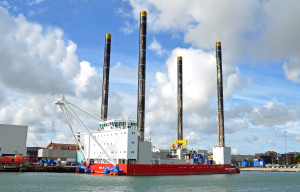 The Portable Dynamic Positioning System, in tandem with a suitable crane installation, eliminates a large portion of the financial burden inherited with traditional new vessel builds and allows U.S. contractors to immediately bid on future offshore wind sector projects emerging in the U.S. – and win.
The Portable Dynamic Positioning System, in tandem with a suitable crane installation, eliminates a large portion of the financial burden inherited with traditional new vessel builds and allows U.S. contractors to immediately bid on future offshore wind sector projects emerging in the U.S. – and win.
The Portable Dynamic Positioning System was recently utilized in Europe for the “Wind Pioneer”, a 56m x 28m offshore construction jack-up vessel for offshore wind turbine installation and maintenance. The system, which was installed dockside without the need for any major hull modifications, uses four azimuthing thrusters at 750 kW each.
Thrustmaster is quickly gaining a reputation for having a forward thinking approach to the developing offshore wind sector in the U.S.
MarineLink.com
http://www.marinelink.com/news/offshore-thrusts-system385514.aspx
OffshoreWIND.biz
http://www.offshorewind.biz/2015/02/10/thrustmaster-backs-usas-offshore-wind-industry-with-portable-dp-system/
Maritime Propulsion
http://maritimepropulsion.com/news/unique-dp-system-thrusts-us-offshore-wind-sector-204









